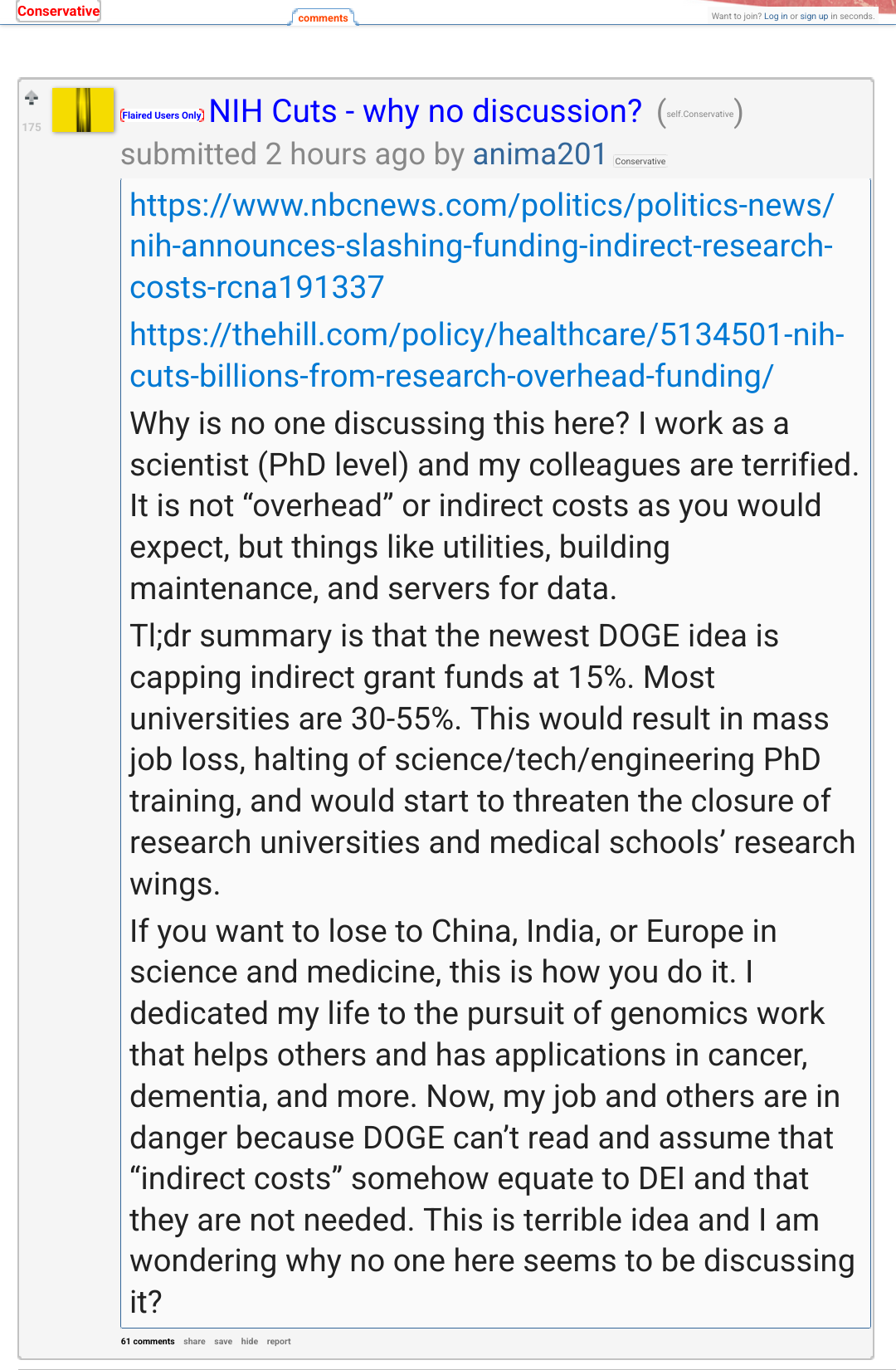this post was submitted on 09 Feb 2025
390 points (96.0% liked)
Leopards Ate My Face
4186 readers
1624 users here now
Rules:
- If you don't already have some understanding of what this is, try reading this post. Off-topic posts will be removed.
- Please use a high-quality source to explain why your post fits if you think it might not be common knowledge and isn't explained within the post itself.
- Links to articles should be high-quality sources – for example, not the Daily Mail, the New York Post, Newsweek, etc. For a rough idea, check out this list. If it's marked in red, it probably isn't allowed; if it's yellow, exercise caution.
- The mods are fallible; if you've been banned or had a comment removed, you're encouraged to appeal it.
- For accessibility reasons, an image of text must either have alt text or a transcription in the comments.
- All Lemmy.World Terms of Service apply.
Also feel free to check out !leopardsatemyface@lemm.ee (also active).
Icon credit C. Brück on Wikimedia Commons.
founded 2 years ago
MODERATORS
you are viewing a single comment's thread
view the rest of the comments
view the rest of the comments

In all honesty though, 60%+ overheads from a university is incredibly high. To an extent that shows that there is a large amount of management and administrative staff not contributing directly to the work. I'm not in medicine, but in the EU projects I'm in only 0-25% of overheads are funded. Though, I can imagine medicine requiring more than the hard sciences.
60%+ is what it takes to lease buildings and pay salaries in NYC, Boston, SF, LA, etc. So, are you okay with wrecking science in those cities?
Have you any concept of how many people would be suffering or dead if Boston’s scientists were flipping burgers instead of making discoveries?
1st pig organ transplant. 1st anesthesia. 1st live donor organ transplant. GLP1 agonists. Enbrel. Gene editing. Human genome. All out of Boston. Off the top of my head.
Leases would show as zero on the balance sheet if the government owned their own buildings. But of course someone decided that was "against the free market" so now the government cannot own anything in the name of "efficiency"
60% makes sense when you consider something like LIGO, or other real-estate heavy physics experimentation grounds, like a neutrino detector.
I’m under the impression that the cuts are from ~30% to ~15%
The cuts are from whatever to 15%. Typically, in expensive cities that are world-class scientific hubs, the indirect rate is over 60%.